A transient receptor potential vanilloid 4-dependent mechanism of hyperalgesia is engaged by concerted action of inflammatory mediators
- PMID: 16597741
- PMCID: PMC6674137
- DOI: 10.1523/JNEUROSCI.5385-05.2006
A transient receptor potential vanilloid 4-dependent mechanism of hyperalgesia is engaged by concerted action of inflammatory mediators
Abstract
The transient receptor potential vanilloid 4 (TRPV4) is a primary afferent transducer that plays a crucial role in neuropathic hyperalgesia for osmotic and mechanical stimuli, as well as in inflammatory mediator-induced hyperalgesia for osmotic stimuli. In view of the clinical importance of mechanical hyperalgesia in inflammatory states, the present study investigated the role of TRPV4 in mechanical hyperalgesia induced by inflammatory mediators and the second-messenger pathways involved. Intradermal injection of either the inflammogen carrageenan or a soup of inflammatory mediators enhanced the nocifensive paw-withdrawal reflex elicited by hypotonic or mechanical stimuli in rat. Spinal administration of TRPV4 antisense oligodeoxynucleotide blocked the enhancement without altering baseline nociceptive threshold. Similarly, in TRPV4(-/-) knock-out mice, inflammatory soup failed to induce any significant mechanical or osmotic hyperalgesia. In vitro investigation showed that inflammatory mediators engage the TRPV4-mediated mechanism of sensitization by direct action on dissociated primary afferent neurons. Additional behavioral observations suggested that multiple mediators are necessary to achieve sufficient activation of the cAMP pathway to engage the TRPV4-dependent mechanism of hyperalgesia. In addition, direct activation of protein kinase A or protein kinase C epsilon, two pathways that mediate inflammation-induced mechanical hyperalgesia, also induced hyperalgesia for both hypotonic and mechanical stimuli that was decreased by TRPV4 antisense and absent in TRPV4(-/-) mice. We conclude that TRPV4 plays a crucial role in the mechanical hyperalgesia that is generated by the concerted action of inflammatory mediators present in inflamed tissues.
Figures

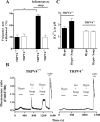
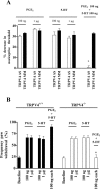
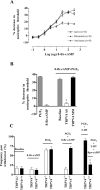
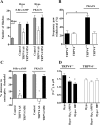
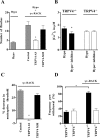
References
-
- Adriaensen H, Gybels J, Handwerker HO, Van Hees J (1984). Nociceptor discharges and sensations due to prolonged noxious mechanical stimulation—a paradox. Hum Neurobiol 3:53–58. - PubMed
-
- Alessandri-Haber N, Yeh JJ, Boyd AE, Parada CA, Chen X, Reichling DB, Levine JD (2003). Hypotonicity induces TRPV4-mediated nociception in rat. Neuron 39:497–511. - PubMed
-
- Alessandri-Haber N, Joseph E, Dina OA, Liedtke W, Levine JD (2005). TRPV4 mediates pain-related behavior induced by mild hypertonic stimuli in the presence of inflammatory mediator. Pain 118:70–79. - PubMed
Publication types
MeSH terms
Substances
Grants and funding
LinkOut - more resources
Full Text Sources
Other Literature Sources
Molecular Biology Databases
